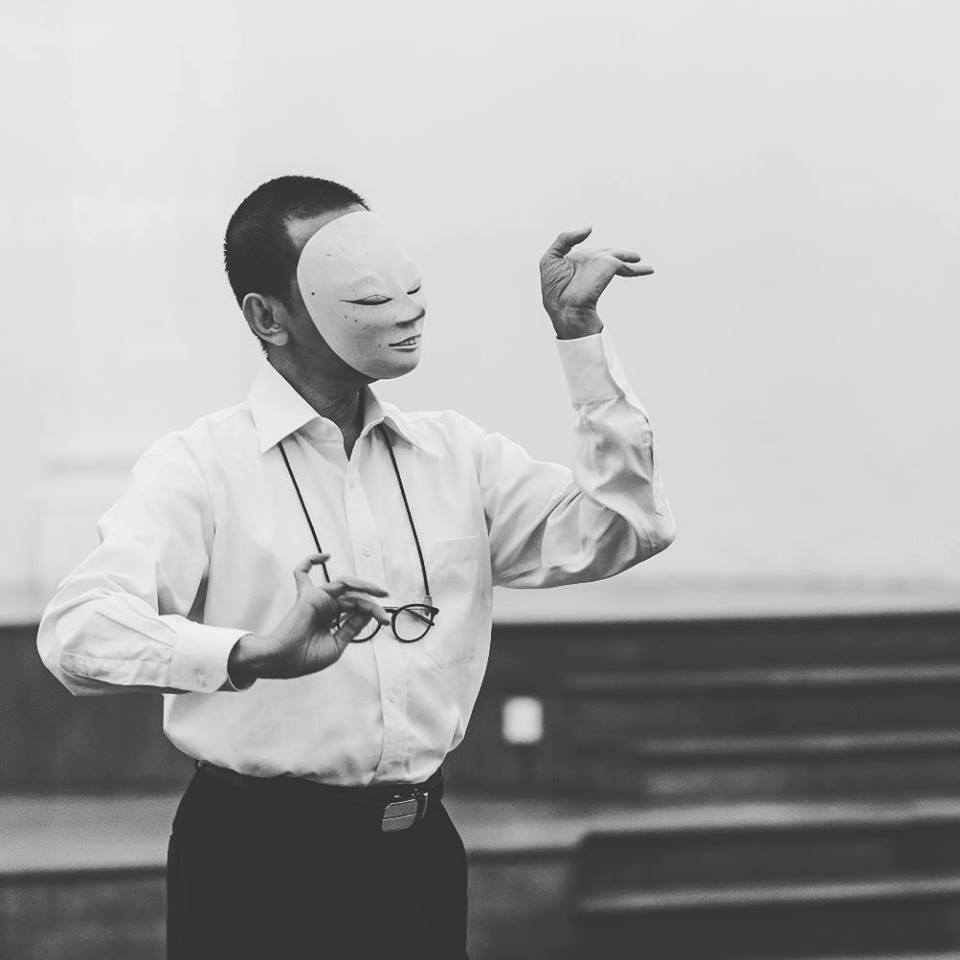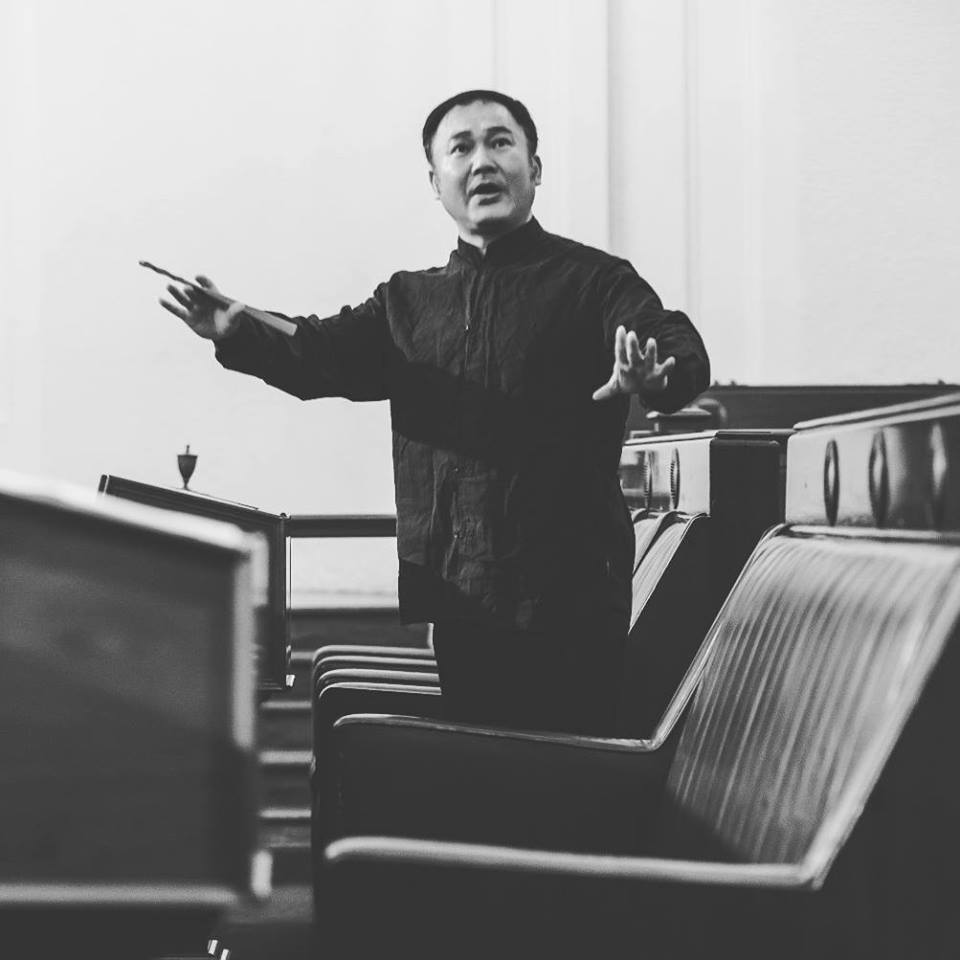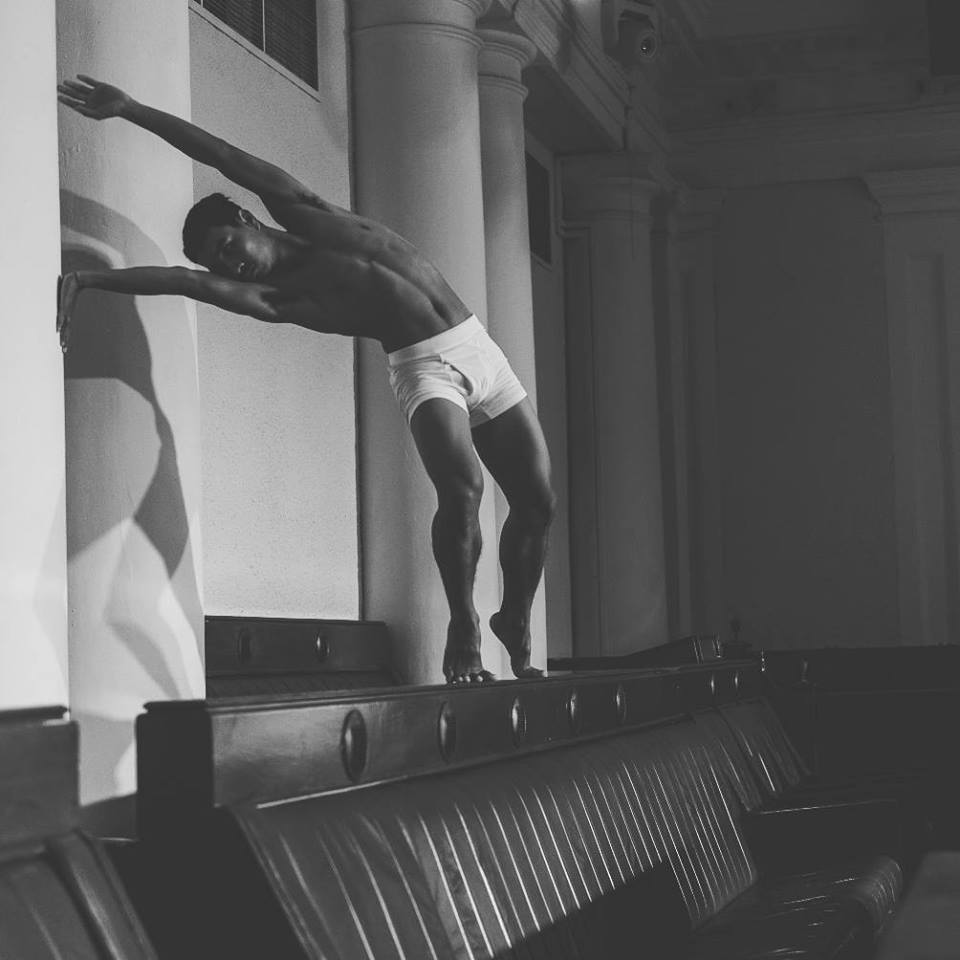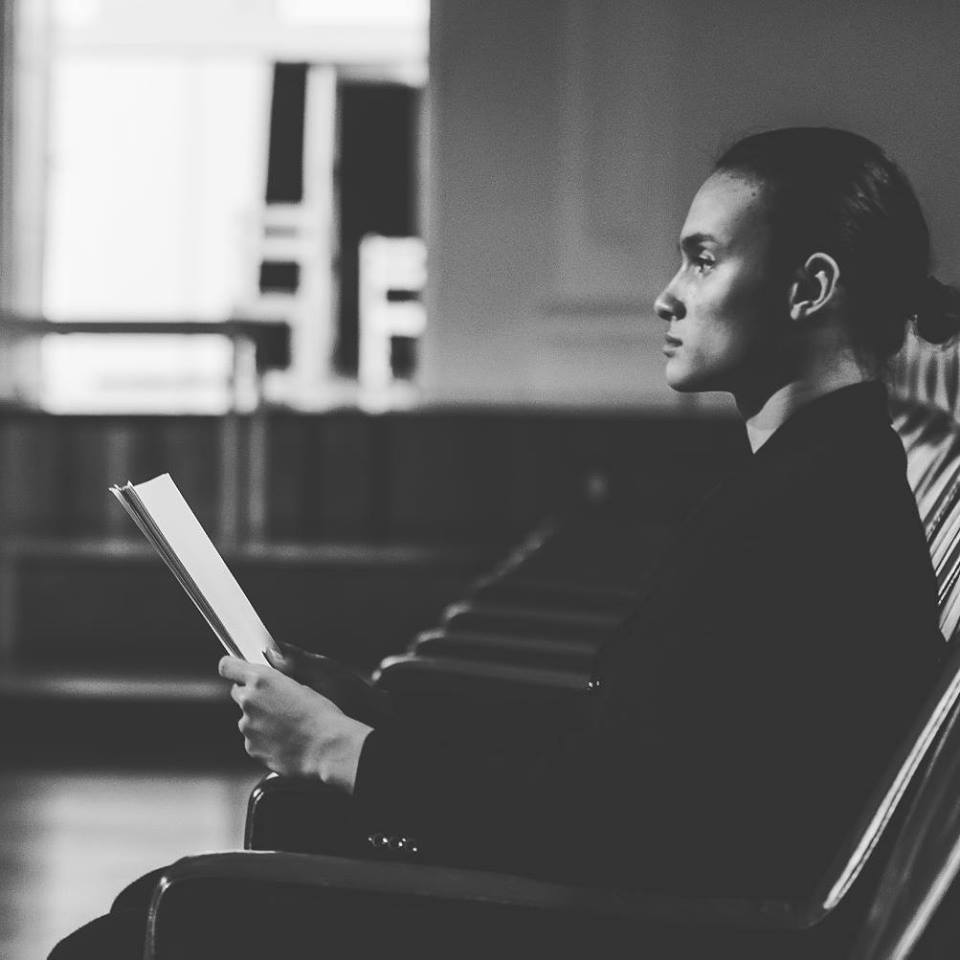I arrived back in Singapore from London a week ago, and promptly presented a paper at the Southernmost theatre festival's Open Forum organised by the new experimental theatre company Emergency Stairs. The two-week festival first seemed to me an over-ambitious undertaking for a brand-new company, with some major hiccups in marketing and ticketing (both poorly done – and hopefully rectified by their next instalment). But the festival has its strengths and insights, and I'll be looking at its culminating event – a triple bill of performances directed by Liu Xiaoyi (Singapore), Makoto Sato (Japan) and Danny Yung (Hong Kong) in the Arts House's Chamber.
I'd watched several experiments with the One Table Two Chairs format at the annual M1 Chinese Theatre Festival organised by The Theatre Practice, the vanguard company that Southernmost festival director Liu Xiaoyi spent many years with before starting his own group. These were usually staged in a black box or flexible studio space, and the experiments were often both intriguing and frustrating, with some incredible movement and revelatory, high-concept imagery bookended by what felt a lot more like 'in-process' trial and error to see what might stick. It felt like a safe lab for directors to test out new directions, catering for an informed audience with the patience for challenging work. Xiaoyi has extended the One Table Two Chairs metaphor to an entire festival, and there's a clear cross-cultural backbone to its programming that emphasises dialogue – two chairs standing in for two different cultures, perhaps, or two different art forms, or two different approaches to performance, and a shared table between them. As to whether that table is a bridge or a barrier to communication is the question that the triple bill poses.
The production places the audience in the steep public gallery overlooking the former parliamentary chamber, the very chamber where Singaporean parliamentarians and its early iterations of government debated policy. It's a setting redolent of centralised authority and decision-making – the dark, imposing wooden panelling; the rows of stiff-backed seats arranged like the opening to a chess match where opposing political parties might square off – which necessitates reading the production as a site-specific work.
(The following images are by Tuckys Photography.)
The production opens with Xiaoyi's piece, a meeting between Javanese dancer, choreographer and mask performer Didik Nini Thowok (Indonesia) and Kunqu master Wang Bin (China). Stripped of their traditional attire, they're suited and briefcased instead – my mind wandered briefly to the idea of Japanese salarymen trapped in a parliamentary setting – drifting through the rows of seats with a fragment of a beautiful gesture or movement from their own art forms. Behind them, projected over the double doors leading out of the chamber, are broad statements in English and Chinese about decision-making. (I didn't take notes because I was watching this show for pleasure, so I hope I remembered this right.) This begins with choice, and free will:
"To become an artist was my own choice."
"To become a cultural leader was my own choice."
"To become a eunuch was my own choice."
And so on, with other roles. This decision-making eventually leads to questions of fault, responsibility, and burden:
"To cross the border was your own problem."
"To become an artist was your own problem."
I couldn't help thinking of these statements as part of a parliamentary debate, where a piece of legislation can be construed in one way by its proponents and in another by its opponents. Did we choose to view the artist as troublemaker and rabblerouser, or were we coerced into seeing the artist that way? Did the cultural leaders we admire choose the path, or did they wrestle with reluctant moral obligation to play the part – and does it matter?
Didik Nini Thowok eventually removes a mask from his briefcase and puts it on, drawing on the archetype of politician as masked trickster; later, the two of them laugh and converse in their individual languages with the help of some charades (I catch, from my meagre understanding of Bahasa Indonesia, something to do with makan, eating). It's a callback to the themes from the late Kuo Pao Kun's Descendants of the Eunuch Admiral, where the Admiral Cheng Ho embarks on a journey of personal and cultural discovery, and Kuo's multilingual work such as Mama Looking for her Cat where characters also converse across languages, unsubtitled. In this case, the meeting of cultures moves beyond the Singaporean context to a larger Asian one, but I wasn't quite convinced by the marriage of images and text. Xiaoyi's construction of associative relationships between image and text has had some rich, delightful results – as was the case with one of his previous productions, Fluid (2014). But in this case the text didn't feel quite as resonant beyond a clever bait and switch ("choice"/"problem"), and the extended riff felt tangential rather than integral to the performances of the two master traditional artists – and vice versa.
The subsequent performance directed by Makoto Sato felt even more unsubtle in its overtures to interculturality. Sato-san's piece involves Wang Bin and Xiaoyi as torchbearers of two generations of performance, one traditional (kunqu) and one avant garde (experimental theatre). In showcasing two markedly different forms and cultures thrown together in the same environment, and relying solely on the friction produced from their widely differing physical vocabularies rubbing up against each other, the novelty of the juxtaposition quickly runs its course and the audience is left to contend with large swathes of stasis when all the symbolism from the encounter has been fully read. Because the piece is relatively brief, this intercultural commentary feels even shallower. A recorded voiceover in Mandarin Chinese is played over their performance in a strict binary:
"I am Liu Xiaoyi."
"I am Wang Bin."
"I am not Liu Xiaoyi."
"I am not Wang Bin."
"Do you know Emperor Yongle?"
"Do you know Emperor Jianwen?"
Some historical context might be useful for this cultural reference; Ming dynasty emperor Yongle, desirous of the throne, overthrew his nephew, the Jianwen emperor, at the turn of the 15th century on the pretext that he was executing powerful rivals. There is an obvious analogy for artistic succession here, whether by revolt or by hereditary decree, and in one particularly heated scene both performers attempt to drown each other out – Xiaoyi convulsing, shrieking and laughing; Wang Bin belting out an operatic solo at the top of his lungs.
Of the three pieces, Danny Yung's closing work felt the most satisfying and complete, juxtaposing the extraordinary physicality of Cambodian dancer Nget Rady and the measured stillness of Thai dancer Junior Dearden. The lights go up on Rady sitting in one of the parliamentary seats (was it LKY's?), and I felt an immediate physical reaction to his near-nakedness in the sacrosanct space of the chamber, even if it is a space that's no longer in official political use. It's a pointed and arresting visual statement – I understand that during the open rehearsals, Yung had initially planned for Rady to be sheathed in a pair of adult diapers, but they went for plain white briefs in the end. As Dearden keeps close to the red line dividing the chamber down the middle, putting one stately foot in front of the other, Rady tumbles and flips across the rows of chairs – he's the reckless mischief maker and airborne provocateur to Dearden's grounded, careful presence, all straight lines and right angles.
Yung continues with the triple bill's refrain of repeated text, and this time he's chosen idiomatic Chinese phrases containing the word 道 (dao), or 'way'/'path' – 旁门左道,胡说八道,大学之道, and so on – with English translations that occasionally felt like they'd been run shoddily, and deliberately, through a poorer version of Google Translate. I couldn't quite tell if he was trolling us or testing us (perhaps both). Is there a single path to follow, or are we all making and remaking it as we go along? Yung's piece contained the most interesting physical counterpoint between the two figures, with a running commentary on authority and subversion, on the dictated path and the desire paths around it. His direction revels in the use of the parliamentary space and the meanings we immediately associate with it – and I could see the threads of inspiration that Xiaoyi has drawn from his body of work.
In a sense, all three pieces are encounters between performers, between cultures, between text and image, between movement and stasis – but I longed for a piece that would go beyond the novelty of the encounter to some sort of deeper engagement. The Southernmost festival has been an interesting introduction to Emergency Stairs' identity in the Singapore theatre scene – it's a niche occupied by groups such as Ang Gey Pin's Theatre OX and Beverly Yuen's In Source Theatre, and the work of Noor Effendy Ibrahim and his collective Akulah Bimbo Sakti (which will be doing some very interesting site-specific work on Pulau Ubin in January) – blending the heavy use of abstraction and physicality with an added emphasis on the academic rigour of interculturality and cultural exchange through masterclasses, workshops and public forums. This triple bill feels like an early greeting, an exchange of pleasantries, and I'm curious to see what comes next as the group begins to establish themselves and dig a little deeper.
Stray thoughts:
- Because of building conservation stipulations, the venues in The Arts House have typically been challenging to design and light, and this production was no different. I found myself straining to make out some of the precise movements by the performers, particularly in the dimly lit first segment.
- Incidentally, Ang Gey Pin is one of Emergency Stairs' associate artists.
- Had a really good time at the Open Forum on Dec 20. I drew from pretty specific literary theory by Mikhail Bakhtin and looked at monoglossia and heteroglossia in Singapore theatre (special thanks to Felipe Cervera for the excellent feedback) and I was paired up with the inimitable playwright Alfian Sa'at, whose topic was 'The Work of Intercultural Art in the Age of Cultural Appropriation'. We had a meaningful discussion after and some really thoughtful questions from the audience. Thank you all for being there, and thank you especially to Xiaoyi and the team for inviting us to be interlocutors of interculturality.
Even more stray thoughts:
- I've been thinking about this festival a fair amount in the past week, and the more I turn this over in my mind, the more I think the festival confuses ideas of inter-, multi-, and cross-culturalism with transnationalism. When we speak of the former, we're usually referring to cultural exchange and pollination within the framework of a specific society or in the case of Singapore, the city-state. Southernmost privileges transnational exchange (Chinese opera, Javanese dance, Hong Kong avant garde) over intercultural exchange (as, one would expect, between the various language and racial groups and cultures in Singapore), which leads to further confusion over representation, e.g. why were almost no Malay-language or Tamil-language groups or artists from Singapore (or other representative languages and cultures resident here) represented in the artist and panellist lineup? Is it because Southernmost is marketing an intercultural dynamic when it is in fact emphasising transnationalism? If the festival was indeed striving for an intercultural dialogue, does it draw too comfortably, even lazily, from its own networks, without venturing further?




